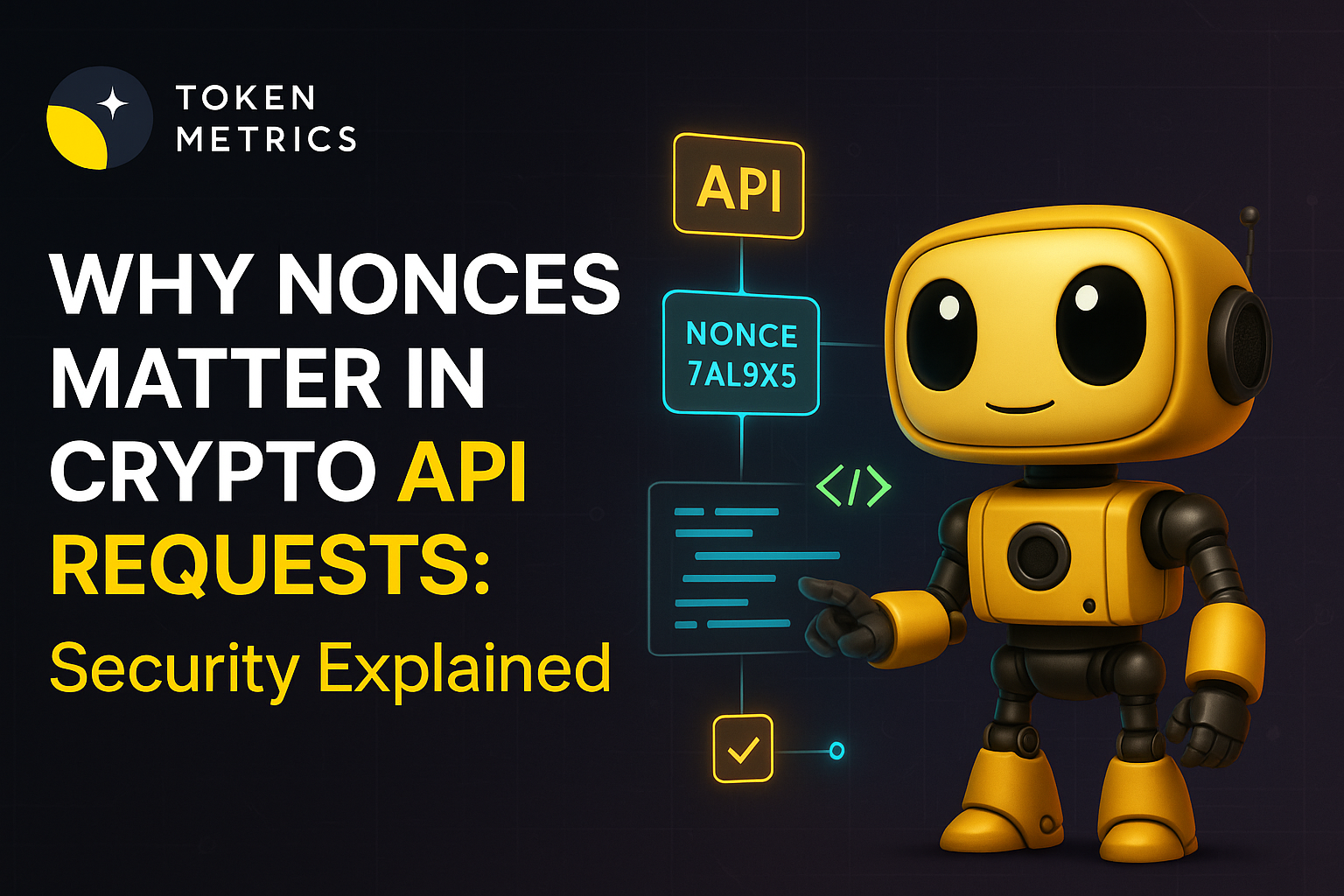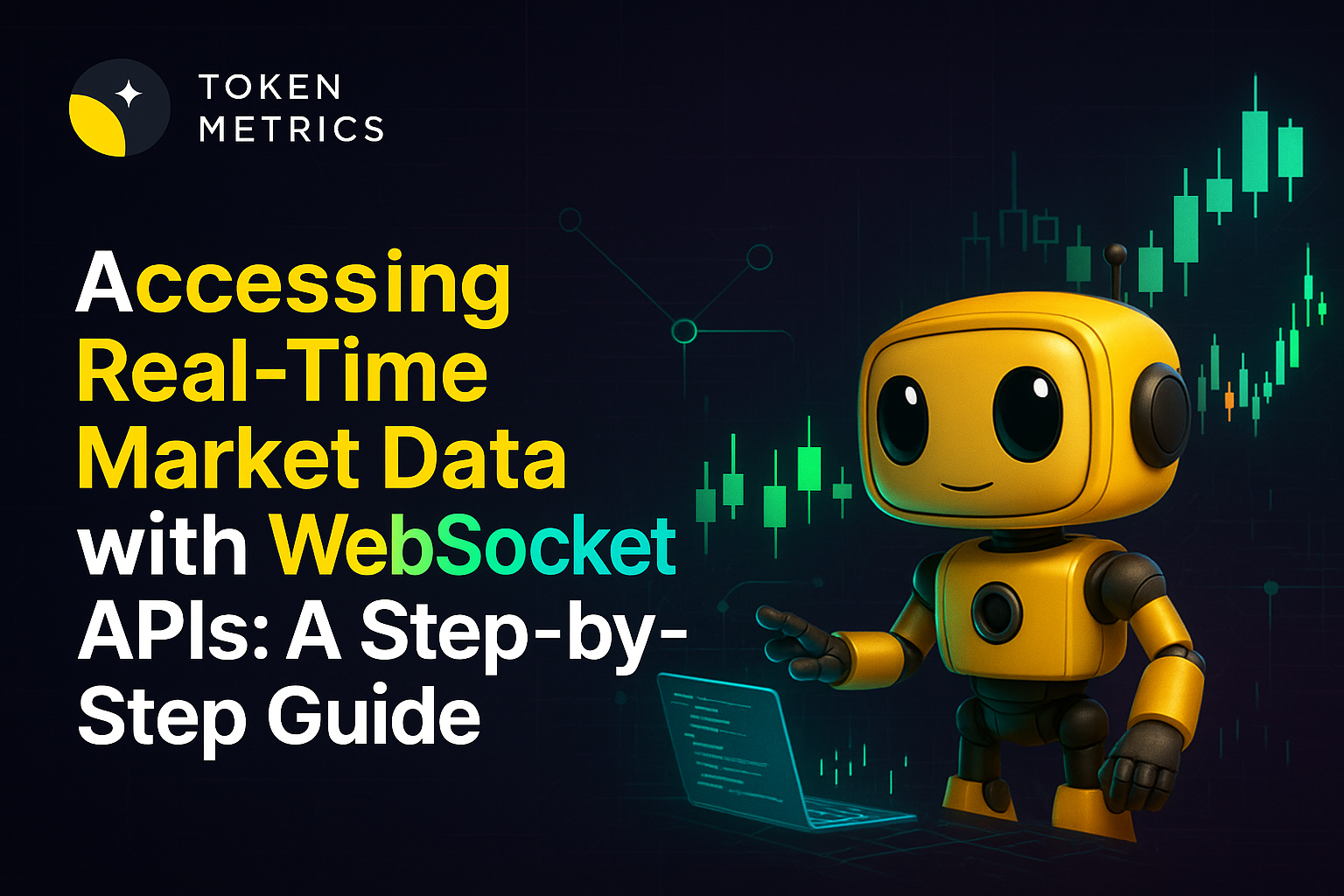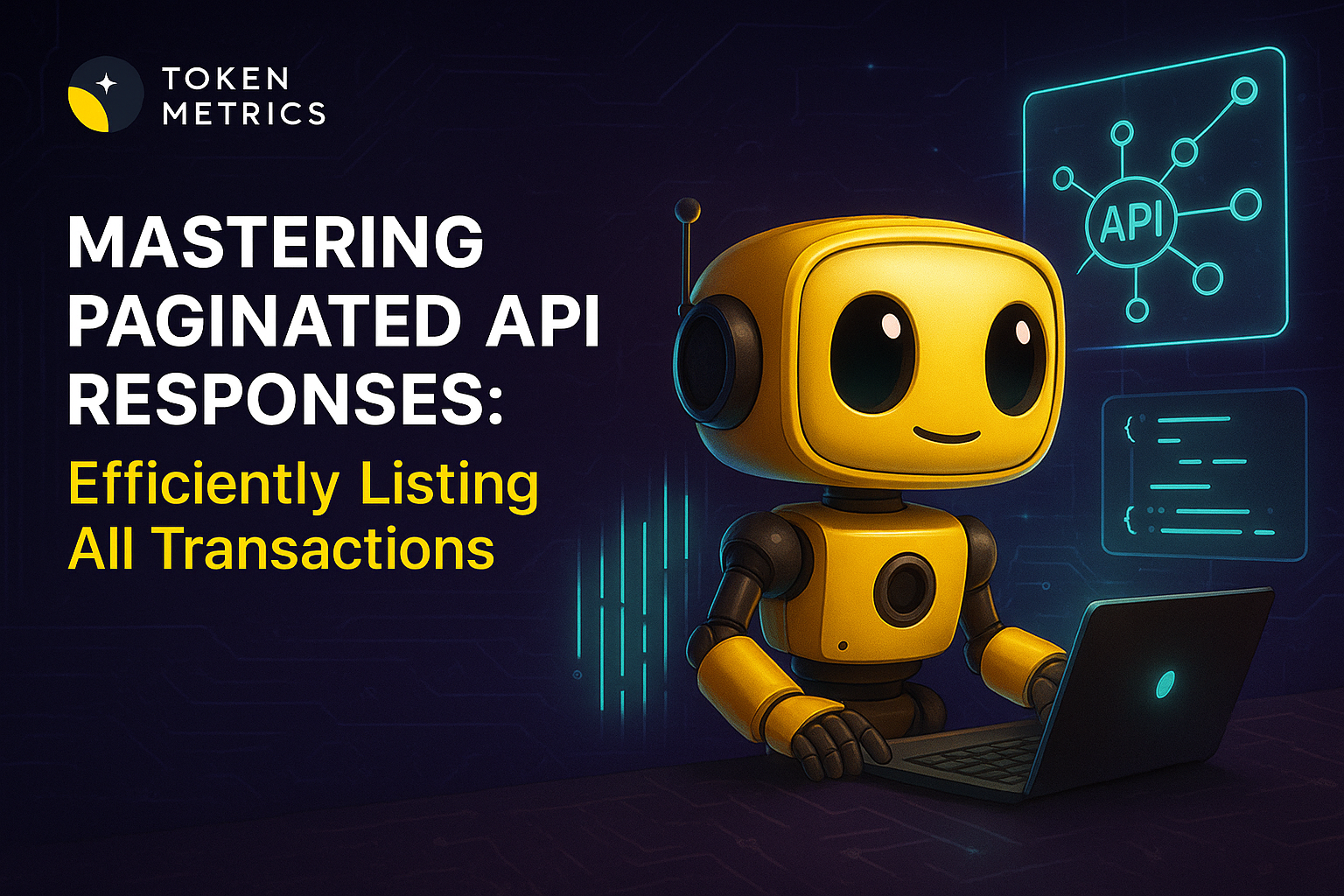Discover the Future of Crypto Investing: Top Token Metrics API Hackathon Projects Revolutionizing Portfolio Management and Trading
.png)
In the rapidly evolving world of cryptocurrency, staying ahead requires more than just intuition-it demands cutting-edge technology and intelligent insights. Enter the Token Metrics AI API, a powerful tool that’s transforming how investors analyze, trade, and manage their crypto portfolios. Recently, a series of innovative hackathon projects have showcased the incredible potential of this API, blending AI, real-time data, and user-friendly platforms to empower investors at every level. Let’s dive into some of the most exciting projects that are setting new standards in crypto portfolio management and trading.
1. Let Me Know – Multi-Agent Crypto Portfolio Management
Imagine a platform where multiple AI agents work together to analyze your crypto holdings in real time and deliver actionable recommendations. That’s exactly what Let Me Know offers. By connecting directly to users’ wallets, it leverages specialized AI agents like Bounce Hunter, which identifies key support and resistance levels, and Crypto Oracle, which analyzes market sentiment and momentum. The platform synthesizes these insights to provide balanced, data-driven portfolio advice, powered by live Token Metrics market data. Whether you’re a seasoned trader or a newcomer, Let Me Know’s intelligent system helps you navigate market fluctuations with confidence.
Links:
2. EndGame – Personalized AI-Powered Crypto Insights
EndGame takes portfolio analysis a step further by tailoring recommendations to your personal risk profile. This sleek Web3 app integrates Token Metrics data to deliver multi-perspective token analysis and risk profiling options ranging from “High Risk/High Reward” to “Safe & Steady.” Its AI trading agents apply specialized strategies to help you optimize your portfolio according to your comfort level, all while providing real-time insights for timely decision-making.
Links:
3. LHedgerAI – Smarter Portfolio Optimization with AI
For investors seeking a mathematically rigorous approach, LHedgerAI offers AI-driven portfolio optimization based on Markowitz’s Efficient Frontier theory. Combining advanced statistical reasoning with Token Metrics data, this platform provides personalized risk-based recommendations-whether you prefer aggressive growth or capital preservation. Its multi-agent AI analysis ensures your portfolio is intelligently diversified and aligned with your financial goals.
Links:
4. SwAutomate – Secure Telegram Trading Bot
Trading on the go just got smarter and safer with SwAutomate, a Telegram bot that automates crypto trading using Token Metrics signals. It features encrypted on-chain trade receipts, making tax and accounting compliance effortless. Integrated with multiple exchanges and powered by real-time market sentiment and technical indicators, SwAutomate delivers a seamless, secure trading experience right from your favorite messaging app.
Links:
5. Token Metrics Trading Signals – Browser Extension
For those who want insights without switching tabs, the Token Metrics Trading Signals Chrome extension integrates directly into popular portfolio interfaces like DeBank and Metamask. It displays real-time buy/sell signals and contextual insights within your existing tools, enabling faster, more informed trading decisions without disrupting your workflow.
Links:
6. ArithmoAI – Gen-Z Friendly Telegram Trading Companion
ArithmoAI is a quant-powered, AI-enhanced trading bot designed for the next generation of crypto investors. It supports multi-exchange management, portfolio tracking, and automated futures strategies, all driven by Token Metrics data. Its user-friendly Telegram interface makes sophisticated trading accessible and engaging.
Links:
7. TaxMate – Simplifying DeFi for SMEs and Web2 Users
Bridging traditional finance and DeFi, TaxMate helps small and medium enterprises convert idle cash into compliant DeFi earnings. With features like treasury management, CSV tax reporting, and a high-risk “Vault” investment option powered by Token Metrics, TaxMate makes DeFi accessible to non-crypto users while optimizing returns with AI-driven rebalancing.
Links:
8. Metavest – Autonomous AI Trading Agent
Metavest combines blockchain security with AI trading to offer a transparent, risk-mitigated investment experience. Utilizing Token Metrics for market data and trading signals, this fully autonomous agent focuses on delivering profitable trades with minimal user intervention.
Links:
9. Pipe It!! – Invoice Factoring Platform
Pipe It!! is an innovative Base-powered invoice factoring platform that bridges traditional finance with DeFi, enabling businesses to borrow against their invoices while allowing investors to earn attractive APYs through AI-driven trading strategies powered by Token Metrics. Businesses submit invoices for evaluation, and upon acceptance, receive advances in ETH from the Flooz Vault. Unused funds are then actively managed using AI-generated trading strategies, optimizing yield generation. Token Metrics integration ensures market-responsive pricing by leveraging real-time sentiment data and sophisticated AI trading models, creating a seamless and intelligent financial ecosystem for both businesses and investors.
Links:
10. TM Signals Bot – Telegram Trading Signals
TM Signals Bot brings real-time cryptocurrency trading signals directly to your Telegram. Powered by the Token Metrics API, it offers market insights, virtual portfolio simulation, performance tracking, top token rankings, and automated alerts. This bot is designed for traders who want instant, actionable information delivered in an accessible chat interface, enhancing decision-making with up-to-the-minute data.
Links:
11. Moon.ai – AI Investment Agent for Beginners
Moon.ai is tailored for entry-level crypto investors seeking AI-guided investment advice. Integrating multiple wallets such as Base and Metamask, it analyzes user actions and provides personalized investment recommendations based on Token Metrics’ market data and signals. This project lowers the barrier to entry for new investors, making crypto investing smarter and more approachable.
Links:
12. Crypto-Whisperer – Natural Language Trading Desk
Crypto-Whisperer revolutionizes crypto trading by enabling users to execute trades through simple natural language commands. Powered by the Token Metrics API, it combines real-time intelligence with a modular architecture to simplify the trading experience. This democratizes access to sophisticated trading tools, allowing users to interact with the market as easily as chatting with a friend.
Links:
13. Trading Bot Maker – Algorithmic Trading Platform
This modular platform empowers users to build custom algorithmic trading bots using insights from the Token Metrics API. Features include configurable buy/sell thresholds based on trader grades, budget management, and real-time monitoring. Designed with a future-ready architecture, it enables traders to tailor automated strategies precisely to their preferences.
Links:
14. Holy MCP – One Platform to Rule Them All
Holy MCP is a comprehensive MCP server platform integrating multiple tools and APIs, including Token Metrics. It offers users access to crypto market data, trading strategy implementation, and token performance analysis through a standardized interface. With an app store featuring hundreds of tools and simplified API key management, Holy MCP streamlines crypto analytics and trading workflows.
Links:
15. Trade Compass – Crypto Trading Navigation
Trade Compass is a full-featured platform providing crypto trading guidance powered by Token Metrics data. It offers in-depth market analysis and actionable trading recommendations, helping users navigate the complexities of the crypto market with confidence.
Links:
16. Combined Masa and Token Metrics Fast-MCP Server
This server consolidates API access from Masa Documentation API and Token Metrics Data API, featuring Fast-MCP integration, Token Metrics API tools focused on V2 capabilities, LangChain/LangGraph compatibility, and streamlined API key management. It enables developers to build sophisticated crypto applications leveraging multiple data sources efficiently.
Links:
17. Tomarai
Tomarai utilizes the Token Metrics API for advanced crypto market analysis and trading. It offers a demo showcasing its capabilities in delivering actionable insights and automated trading strategies.
Links:
These projects exemplify how the Token Metrics API is catalyzing innovation across the crypto ecosystem-from portfolio optimization and automated trading bots to user-friendly interfaces and compliance tools. Whether you’re an individual investor looking for smarter insights or a developer seeking to build the next breakthrough application, the Token Metrics API ecosystem offers a wealth of inspiration and functionality.
Stay tuned as these projects continue to evolve and redefine crypto investing with AI-powered precision and real-time intelligence. The future of crypto portfolio management is here-and it’s smarter, faster, and more accessible than ever before.
Create Your Free Token Metrics Account

.png)




%201.svg)
%201.svg)


%201.svg)










.svg)




.png)